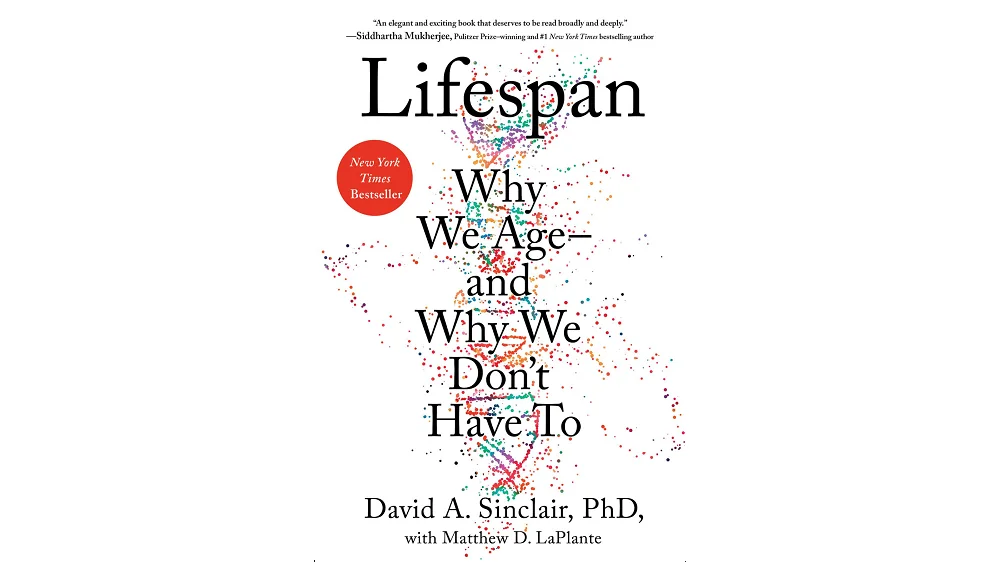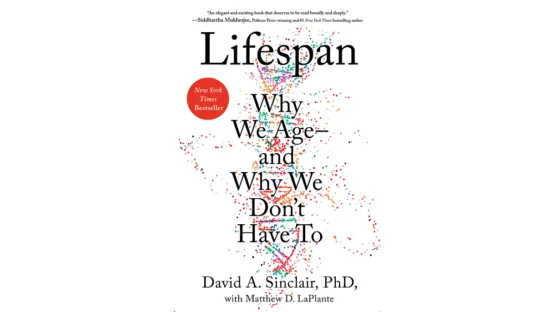David Sinclair, PhD, esteemed molecular geneticist at Harvard, believes that aging is a disease that should be attacked at its roots. Furthermore, he believes if we are to make efficient and sensible use our medical resources, we must move away from the “whack-a-mole” approach to treating individual age-related diseases. In his first book, Lifespan: Why We Age – and Why We Don’t Have To, Dr. Sinclair expounds on his Information Theory of Aging.
The politics of aging research
Dr. Sinclair asserts that the failure to define aging as a disease has resulted in the poor allocation of research dollars that could further enhance our understanding of aging biology and the development of treatments for aging. Chasing down cures for individual diseases, such as cancer, cardiovascular disease, and Alzheimer’s, demonstrates that we have surrendered to the idea that aging can’t be treated as a disease, despite aging being our greatest danger. Dr. Sinclair points out that stopping the progression of one disease is futile when it is simply replaced by another. While lifespans have increased with this approach, healthspans haven’t.
Aging theories of the past
Historically, aging theories premised on free radical damage and the like cite natural selection and slowly accumulating DNA damage as the primary drivers of aging. However, if DNA damage was as significant as once believed, cloning would not be possible because cloning depends on intact DNA to occur.
Evidence has led researchers to shift away from the free radical theory of aging towards the Hallmarks of Aging model. Sinclair argues that these ultimately arise due to a loss of information. In the Hallmarks, this is defined as epigenetic alterations, which occurs when methylation of cellular DNA drifts in predictable ways that establish the aging phenotype.
The Information Theory of Aging
The Information Theory of Aging posits that the loss of information in the epigenome is the universal cause of aging. Sinclair’s theory emerged from decades of research focused on the expression of longevity genes and their associated longevity factors.
According to the information theory of aging, DNA is a form of digital information that remains sufficiently intact to reset cells to a youthful phenotype. What changes is the placement of methyl groups in regions of DNA that block gene expression. This is a form of analog information. The regulation of gene expression using methyl groups is what defines the epigenome. Sinclair argues that these methylation changes are what cause the emergence of the hallmarks of aging.
Longevity genes, when expressed, produce longevity factors: proteins and related compounds that are associated with increased longevity. These factors include sirtuins, FOX proteins, NAD+, and target of rapamycin (TOR).
Sirtuins are a family of seven proteins that regulate inflammation, energy metabolism, and DNA repair. They function in the presence of NAD, and suboptimal sirtuin expression can occur if NAD+ is not produced in sufficient amounts. NAD+ production tends to decrease with increasing age. This coenzyme helps turn macronutrients like carbohydrate, fat, and protein into the energy necessary for driving cellular processes.
TOR regulates growth and metabolism. It provides a distress signal when DNA repair is needed and plays a vital roles in autophagy. Autophagy, which means “self-eating”, is a metabolic process by which expired proteins and other cellular constituents are degraded and used for energy or recycled.
AMPK (AMP activated protein kinase) activates glucose and fatty acid metabolism when cellular energy reserves get low.
Longevity genes are conserved, meaning they can be found in nearly every organism that exists because they appeared very early in the evolution of life and are essential for enabling life to endure stressful environmental changes.
What we can do to express our longevity genes
Dr. Sinclair holds that integrating daily practices such as fasting, cold exposure, and sauna use can activate these genes and extend our healthspan. He states that maintaining optimal activity of these genes and their products is the key to maximizing the natural longevity of any species. Therefore, he offers a number of evidence-based strategies that include dietary adjustments, exercise, cold exposure, and avoidance of pollutants such as cigarette smoke.
The dietary approach advocates eating less, fasting intermittently, reducing protein intake, and consuming a diet rich in vegetables, which contain phytonutrients that can positively affect methylation patterns and mTOR.
Sinclair points out that people who exercise regularly have larger telomeres (non-coding regions at the ends of DNA that erode with somatic cell division). Exercise also shifts cells into longevity mode by raising NAD levels, which activates and supports survival networks. He also recommends high-intensity interval training.
Having covered what we can do to maximize longevity, Sinclair then shifts his focus to medicines that extend human life: rapamycin, metformin, resveratrol, and NAD boosters.
Rapamycin has been shown to extend lifespan in mice by 9-14%; however, this comes at the expense of lowered immune response.
Metformin, a diabetes drug, may also promote longevity. It appears to offer some protection from cancer in 25 out of 26 clinical studies. Additionally, metformin mimics certain aspects of caloric restriction.
Resveratrol, a naturally occurring molecule found in the skins of red grapes and certain berries, appears to benefit heart health and up to a 20% extension in lifespan in mice.
NAD boosters, such as NR and NMN, appear to increase lifespan in animal studies.
Critique
The Information Theory of Aging is premised on the notion that age-related changes in the body are primarily a function of epigenetic drift, however, Sinclair ignores certain factors, such as advanced glycation end products (AGEs) and the accumulation of lysosomal aggregates. Such factors are likely to continually undermine tissue elasticity and extensibility, drive inflammation, and disrupt vital processes such as autophagy.
What the future may hold
Several drugs and emerging technologies may extend healthspan. The development of personalized medicine, DNA screening, and a wide array of biotrackers may enable individuals to preemptively guard their health.
Additionally, senolytics could rid the body of senescent cells, which evidence suggests could delay the onset of many of the inflammaging-related diseases that arise during middle age. Further, the development of partial reprogramming protocols that use Yamanaka factors to reset DNA methylation patterns to a more youthful phenotype is rapidly progressing.
Finally, Dr. Sinclair offers a well-rounded finish by addressing the impacts of global life extension and the corresponding population increase that would be expected. In doing so, he cites a number of potentially dystopian scenarios, including indefinite service among dubious politicians, the effects of excessive consumption and waste, and equitable distribution of cutting-edge treatments.
On the positive side, he notes the tremendous savings that are possible in shifting perspectives from individual disease research to aging as a disease. Dr. Sinclair believes that although a long-lived population presents several socioeconomic and environmental challenges, human ingenuity will overcome them.




